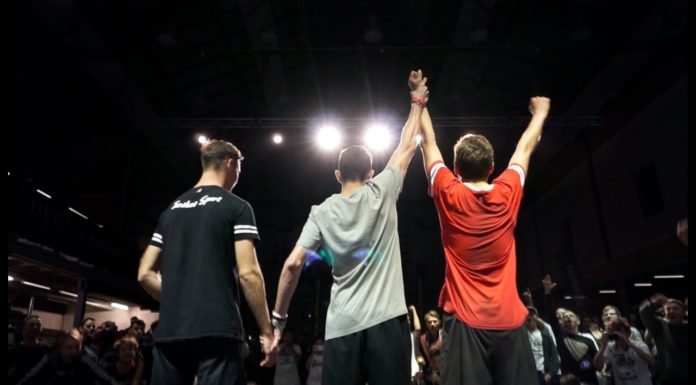The once proud Atlanta United was the showpiece team of MLS long before Inter Miami or LAFC. Poor decisions from the top have reduced the club to just another team in the league struggling to find itself.
Atlanta United were supposed to be something different. It was, at last, going to be the first MLS club that was not going to take anything for granted. Winning was their goal, and boy, did they mean it.
The club wasted no time jumping out of the gate in 2017. The first order of business was hiring former Argentine national team coach Gerardo “Tata” Martino. Players of the caliber of Leandro González Pírez, Yamil Asad, Miguel Almirón, Héctor Villalba, and Josef Martínez opened a new door for how MLS teams scouted, hired, and played.
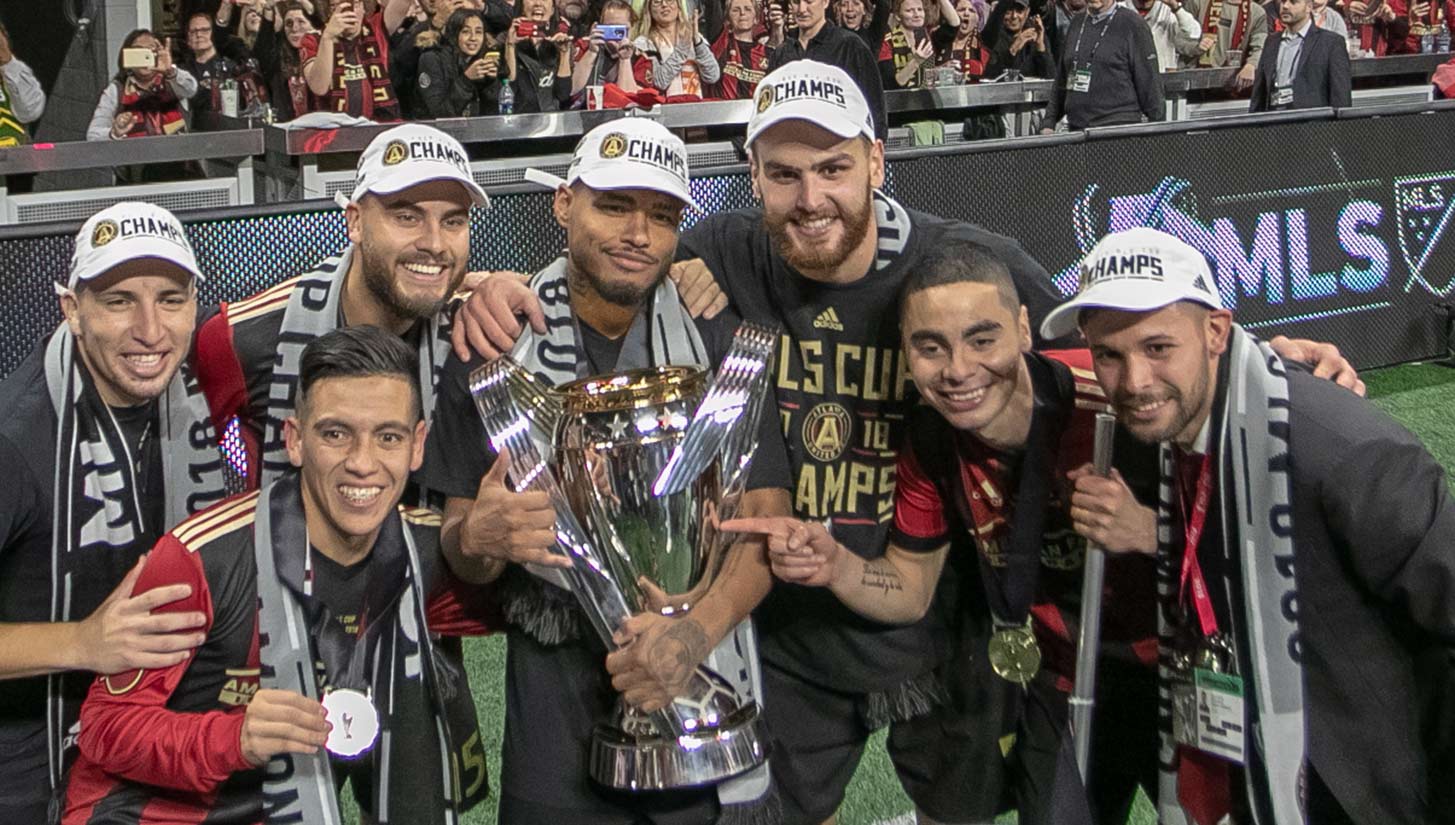
Attacking, vibrant soccer was the key. Star players at the start of their careers were the blueprint, and being the first true selling club in the league was the icing on the cake to show fans that they could not only win titles but also be a player in the world transfer market.
In 2018, Atlanta United won an MLS Cup with Martino as manager and architect of the franchise’s philosophy. One season later, the team sold Almirón to Newcastle United for $26 million, which still stands as a record for the most expensive outbound MLS player of all time.
If you were into MLS betting, you’d put all your money on a new powerhouse being formed, right? Wrong.
While silverware still came in the form of a U.S. Open Cup and Campeones Cup in 2019, things started to roll downhill for Atlanta — and by 2022 it was neither selling players nor winning any titles.
Today, the team is a shell of its former self, with no end in sight to return to the days of Martino, Martinez, and Almiron.
How the Downfall Began
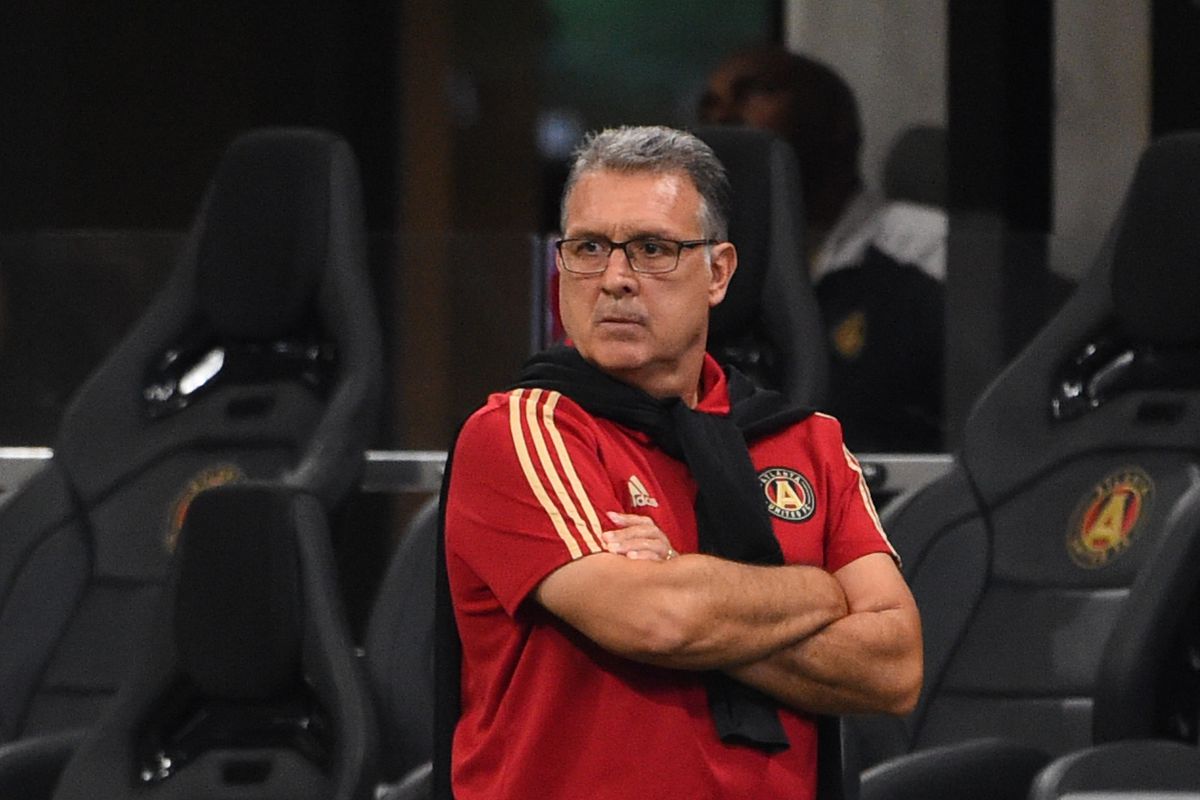
According to reports by Felipe Cárdenas, the fall of Atlanta United began at the end of 2018. Angry with technical director Carlos Bocanegra’s interference, Martino stepped down after winning the MLS Cup. Sources had indicated at the time that Martino and Bocanegra were barely on speaking terms during the team’s championship season.
Darren Eales, the club’s first president and the man who sought out Martino, was the peacemaker and the glue that tried to keep the club’s philosophy together after the Argentine coach left.
A lot had to do with Bocanegra overruling Martino on key decisions. The biggest was the major signing of Esequiel Barco for a club record fee of $15 million when Martino wanted that kind of money to be spread out among the squad.
Barco had a lot of ups and downs in MLS, never living up to his price tag despite flashes of brilliance. Worse yet, in his only season under Martino, the manager had to discipline the young Argentine and remove him from the squad for a few weeks.
Long after Martino left Atlanta United, Barco, who was going to be one of the biggest transfers in league history, was loaned back to Argentina to play for River Plate with an underwhelming 17 goals in 81 MLS games. Now, 25 and still at River Plate, Barco is virtually the same player he was at Atlanta United: a lot of talent, lots of hustle, but prone to puzzling decisions.
Barco was the first of many poor choices Atlanta United would make. The club paid nearly $16 million to River Plate for Gonzalo “El Pity” Martínez, the South American player of the year in 2018.
Fresh off a Copa Libertadores campaign that saw River Plate defeat Boca Juniors in a final played in Madrid due to security concerns, El Pity was hot as a volcano when he came to MLS. The problem? Martínez had a history of going ice cold once things stopped going his way.
It took manager Marcelo Gallardo nearly two years to get the best out of Martínez at River Plate. At Atlanta United, Martínez was at times wonderful but more often than not lacking and left MLS for Saudi Arabia after just seven goals in 31 games.
After the Martino era, the heart of the team would eventually either be sold or leave the club, with Greg Garza, Michael Parkhurst, and Jeff Larentowicz all gone by 2020.
The club never found proper replacements for their talent or leadership, instead either overly depending on youth players or signings that often disappointed.
Another reason for the club’s downfall centered around their best player, Josef Martínez. After three huge seasons for the club, an ACL injury took a step out of the Venezuelan striker. Banking on a major return, Martínez never recuperated the level of play of his first three seasons at the club.
Still, Martínez played two more uneventful seasons as not only one of the team’s highest-paid players, but also the face of the franchise with zero competition for his starting spot.
In 2022, Eales departed the club for Newcastle United, and Garth Lagerwey stepped in as president and CEO. The club hadn’t made a significant sale to Europe since Almirón. Some of the other major faces of the club either retired, moved to other MLS teams, or were simply sold to South American clubs at a bargain rate.
Pity Martínez’s sale to Al Nassr was more of a way to cash in on a broken clock than it was a sale to hold one’s head up high for.
When it came to American players, the club dropped the ball on many, mainly Miles Robinson — who former coach Gabriel Heinze had stated to fans, media, and team brass that he had the credentials to play in Europe sooner rather than later. Instead, an Achilles injury prevented Robinson from making a move, and he is now with FC Cincinnati.
Replacing Martino
When Martino left Atlanta United in 2018, the club felt it had the pillars to continue its success by following the South American’s blueprint. Yet in 2019, the Five Stripes did a complete 180 and hired Frank de Boer as manager. The Dutchman had the credentials as a player, but his coaching career was suspect.
Worse yet, a heavily Latin influence on the team did not mesh well with the straightforward nature of de Boer. The team never played well under the former Ajax defender, and despite winning two titles with the club, the team lacked the excitement it had under Martino.
De Boer would eventually go on to coach the Netherlands, where he’d have a disastrous time, and his departure made way for fellow Argentine and Martino pupil, Gabriel Heinze.
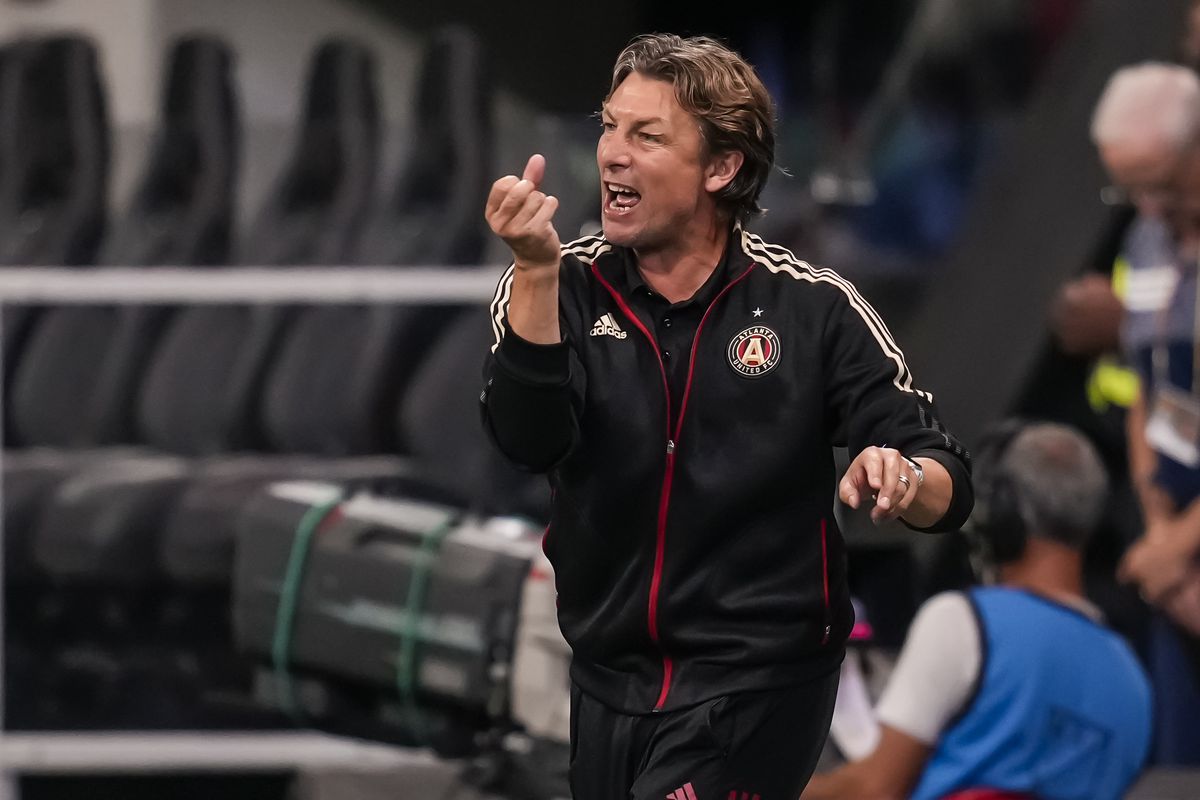
Heinze was marketed to fans as a younger and new-and-improved Martino. In fact, both came from Newell’s, and Martino had coached Heinze as a player near the end of his career. However, Heinze also played for Real Madrid, Manchester United, and Argentina, giving the team a South American expert with top European experience, something that even Martino lacked.
The problem? Heinze wanted nothing to do with being a spokesperson for the team, but simply wanted to coach and let his players do the talking on the field. Clearly not understanding the role he was given, Heinze produced some of the most awkward press conferences in MLS history.
Speaking down to the press, using his own interpreter rather than the club’s employees, and not being open to doing marketing events did not endear Heinze to anyone. A poor record of 4-5-8 didn’t help things either, and he was dismissed after just six months in charge. Due to the COVID-19 pandemic, much of the Atlanta local press never met Heinze in person, as conferences were done virtually at the time.
Heinze has never spoken publicly about his firing, and his camp did refute talks that he had a poor relationship with the players. Even owner Arthur Blank had something to say about the coaching change at the time.
“I think in this last coach, there were some things in terms of cultural aspirations and the way he was treating our players, et cetera, et cetera,” Blank said. “I think we probably could have done a better job with our homework, upfront on that. Certainly, from a technical standpoint, he was very well-qualified. You learn from those lessons and you move on.”
The club did, and eventually changed philosophies. Out was the flashy foreign-based coach with pedigree. By then, other teams in MLS had tried the Martino blueprint and failed (Guillermo Barros Schelotto with the Galaxy, Thierry Henry at Montreal, and Matías Almeyda with the San Jose Earthquakes). In was the regular hard-working, low-fanfare MLS coach.
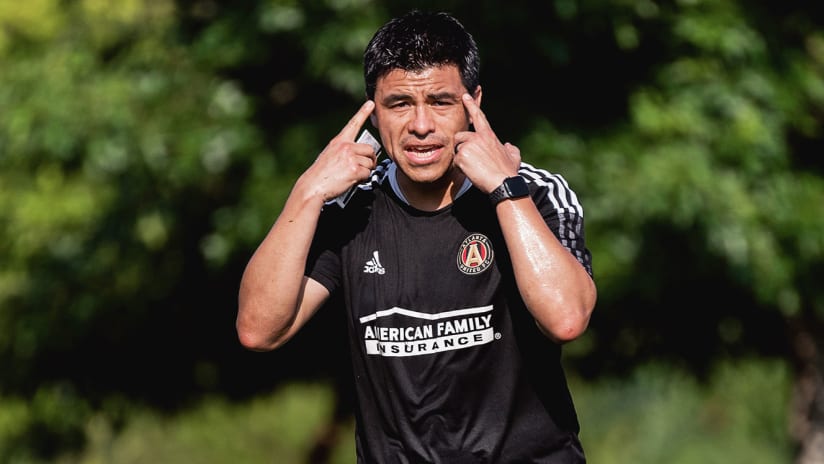
This time the choice was and still is Gonzalo Pineda. The end result has been a typical mid-table MLS side. Pineda has won nothing with the club and holds an under .500 record of 37-40-31.
From Flash to Mundane
Today, when one looks at the Atlanta United squad, it does not scream different; it screams basic MLS. Gone is the South American flair, replaced by a multi-national squad that reeks of low-card players.
Thiago Almada and Giorgos Giakoumakis are the only two players on the squad that have any sort of credentials. Almada has long been due for a transfer to Europe, but with MLS and Atlanta United holding out for a mega deal, things have stalled.
The 23-year-old is hopeful a solid Summer Olympics with Argentina will finally seal his long-awaited move to Europe. Suitors in La Liga and Serie A have been interested in Almada, though not so much in his near $30 million price tag.
Giakoumakis is another story. The Greek striker has been lights out for the Five Stripes, but a major offer from Cruz Azul has tempted him to consider the move less than a year-and-a-half since his arrival.
If Giakoumakis and Almada leave, it will officially mark the end of the selling and championship club era for Atlanta United.
Today, as things stand, Atlanta United are a dismal 12th in the MLS East, with a 3-7-4 record. The club still plays to 40,000 fans at Mercedes-Benz Stadium, although who knows how long the fans will put up with the consistent mediocrity.
The vibe, the style, the color of Atlanta United is long gone, and what was once one of the best projects in MLS is just another United in a long list of Uniteds that are as mundane as a cloudy day in England.
Sadly, there is no horizon in sight for when Atlanta United will return to form and once again compete for trophies and roster some of the most exciting talent in the league.




